Planning your dive in Komodo can be tricky: conditions shift by region and season, and currents vary by site. You’ll need clear guidance on which sites fit your certification, what conditions to expect, and how to plan safely without overpacking or overspending.
Without precise, local context, you can either avoid headline sites they could safely enjoy or push into currents they didn’t plan for.
This guide gives you a straight view: which Komodo routes suit OW, AOW, and advanced divers; how tides and timing are managed by experienced guides; when and where to expect cooler or warmer water; what to pack (e.g., 3–5 mm, SMB); and how to choose safe, efficient itineraries. Komodo is absolutely diveable when you match sites to skills and follow local practice: we show you exactly how to do that.
Who Can Dive Here
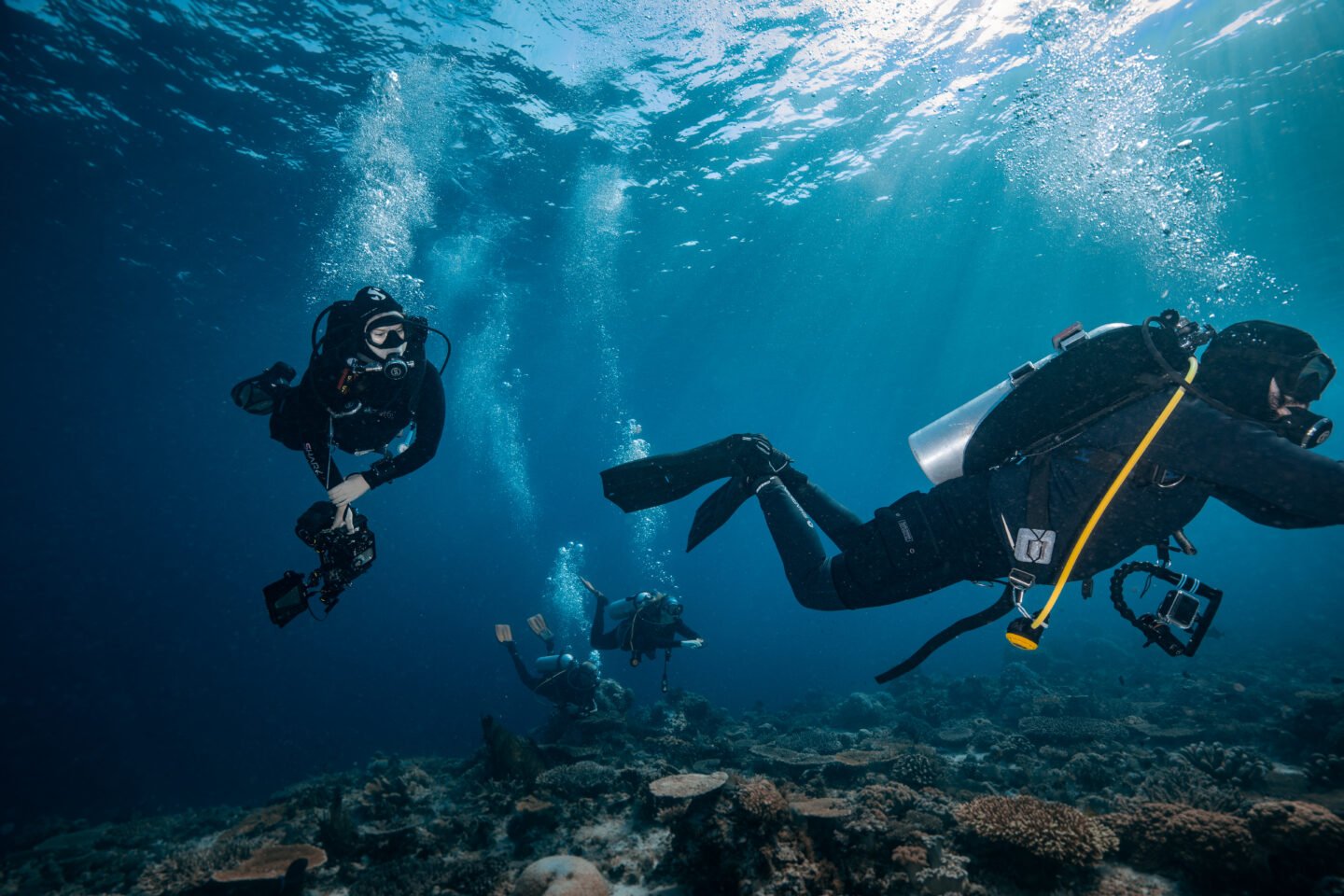
Short answer: Most certified divers can enjoy Komodo safely when sites are matched to experience and dives are timed by local guides. The leveling here is only for illustration. Your amount of dives logged also play a factor.
Open Water (newer divers)
Calm, protected sites near Labuan Bajo such as Siaba Besar and Sebayur Kecil can be comfortable for you. These are ideal for building confidence, practising buoyancy, and enjoying turtle-rich reefs without strong current.
Advanced Open Water / confident OW
Ready for some movement in the water? Step up to Crystal Rock or The Cauldron/Shotgun. These sites feature manageable currents when timed well, rewarding you with schooling fish and regular predator action.
Experienced / current-savvy divers
If you have solid current skills and are happy with negative entries, hooks and clear briefings, headline sites like Batu Bolong and Castle Rock deliver fast water and dense marine life. These dives are best planned for the correct tide window.
Underwater photographers
Bring both wide and macro set-ups: wide for mantas and reef scenes; macro for critters (e.g., pygmy seahorses). You can select sites and timings that prioritise either stability (for macro) or action (for wide).
Read Also: Top 5 Macro Dive Sites in Komodo
Safety notes that apply to everyone
Local guides read tides and topography and will choose entries/exits to keep dives controlled. Use an SMB, stay close in drifts, and let the current carry you, don’t fight it.
Why The Waters in Komodo Feel So Alive
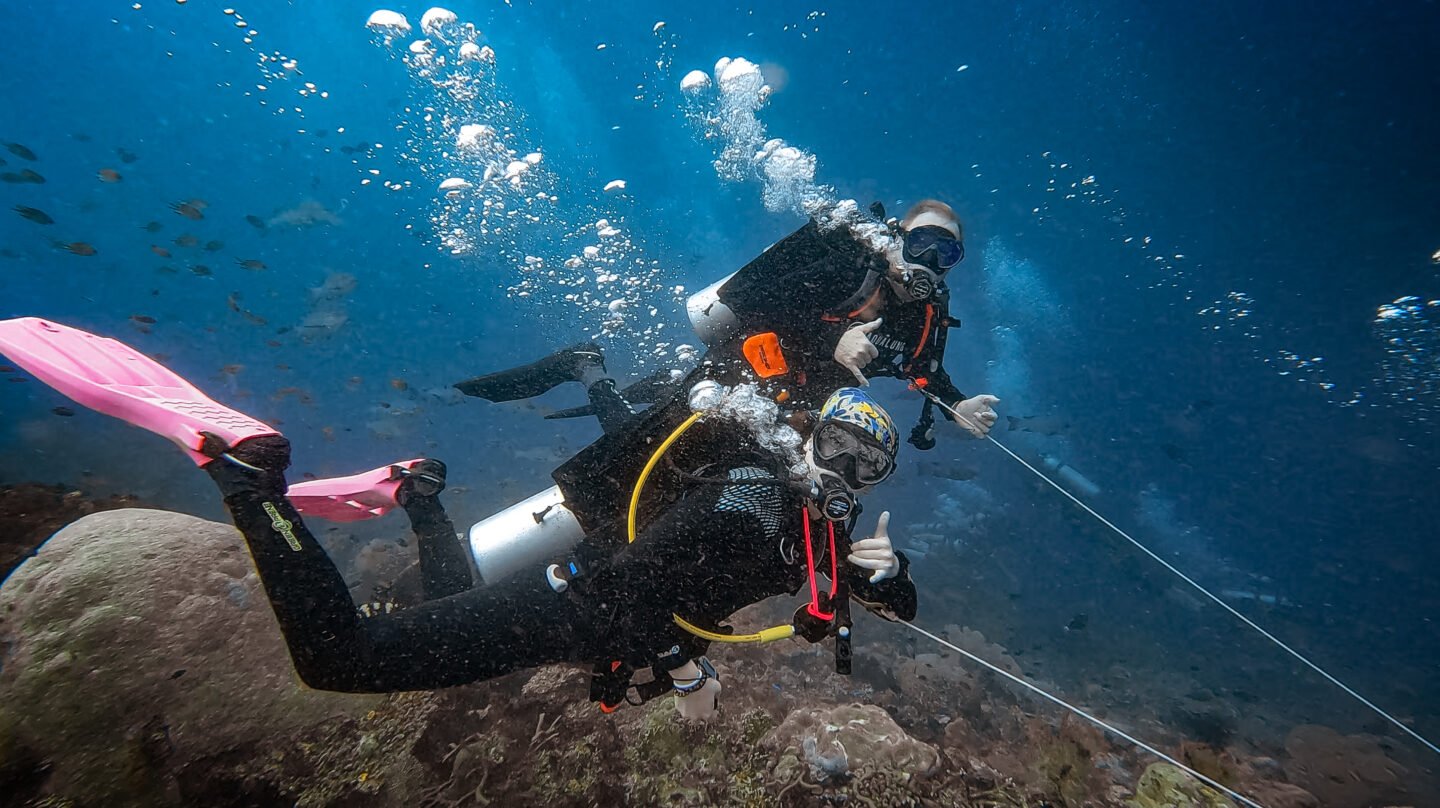
Here’s why Komodo’s water so absurdly unpredictable that it feels like its alive:
- It’s the geography, two oceans colliding, trading temperatures, energy, and nutrients all day, every day.
- Ocean Crossroads: It’s where warm meets cold. That mix pulls nutrients up from the deep and fills the water with life.
- The Food Chain in Motion: Plankton bloom, small fish gather, and soon the big guys arrive. Sharks, trevallies, mantas, everyone’s here for the buffet.
- Different Worlds Every Dive: Walls, slopes, drift channels, every site feels like a brand-new story.
- Healthy Corals: The currents act like cleaners, keeping the reefs fresh and bright.
- The Coral Triangle’s Heart: Over a thousand species of fish. Two-hundred-plus kinds of coral. It’s no wonder scientists never stop studying it.
Understanding Komodo’s Currents
Komodo’s water movement is driven by tides, moon phase and the shape of the seabed. These currents are the engine of the ecosystem and the reason the diving is so great.
What drives them
Komodo sits where the Indian and Pacific Oceans exchange water. Straits and pinnacles create pinch-points that accelerate flow, lifting nutrients and keeping reefs healthy. Expect conditions to change across short distances and with the tide cycle.
How La Galigo and other diving operators manage them
Local guides plan entries around the tide window and read the surface and underwater cues before committing. Timing is the difference between a hard swim and an easy, efficient dive, trust their call.
Many dives are set up as controlled drifts where you move with the water rather than against it. On higher-energy sites (e.g., Castle Rock or the Cauldron/Shotgun), you may make a quick descent or use a reef hook to hold position when instructed. Batu Bolong is typically scheduled for slack water to keep the dive structured.
Your role on the dive
- Go with the flow: Don’t fight the current; stay streamlined and let the plan do the work.
- Stay close: Maintain visual contact with your guide and team in drifts.
- Use the right tools: Carry and know how to deploy an SMB; use reef hooks only when guided, and never on living coral.
- Expect variation: Cooler water and occasional surge are normal in the south at certain times of year; briefings will cover this.
Bottom line: The current is not a hazard when dives are matched to conditions and timed correctly; it’s the feature that makes Komodo excellent. Follow briefings, dive the plan, and let the water work for you.
Read Also: Is it Safe for Beginners to Dive in Komodo?
Must-Dive Sites You Shouldn’t Miss
| Dive site name | Short description | Recommended experience (logged dives & skills) | Typical cert OK* |
| Batu Bolong (Central) | Compact pinnacle; strongest flow on the shoulders, best at slack. Huge fish density when timed well. | 50–60+ dives. Very solid buoyancy, situational awareness, comfortable holding position in variable flow; SMB proficiency. | AOW or higher (or OW with strong recent current practice) |
| Castle Rock (North) | Open-ocean seamount with steady current; negative entries and reef hooks are common. | 40–60+ dives. Confident negative entry, hook use, blue-water safety stop discipline; drift control. | AOW+ |
| Crystal Rock (North) | Seamount sister to Castle; variable current, frequent clear water and schooling fish. | 30–50 dives. Comfortable in moderate current; able to descend/ascend on cue; good gas/NDL management. | AOW or confident OW |
| The Cauldron / Shotgun (North) | Channel drift that accelerates through the “shotgun” section; timing and positioning matter. | 30–50 dives. Proven drift skills, quick descents, stable trim in fast water; SMB proficiency. | AOW+ |
| Manta Alley (South) | Regular manta cleaning/feeding when conditions align; cooler water and occasional swell/surge. | 40–50 dives. Calm positioning around cleaning stations, surge management, good trim; thermal comfort planning. | OW+ |
| Cannibal Rock (South – Rinca) | Macro hotspot with consistent critters; usually calmer but tight framing demands control. | 40–50 dives. Fine buoyancy for close-up work; minimal finning near substrate; situational awareness. | OW+ |
| Siaba Besar (Central) | Sheltered reef ideal for checkouts; turtles and relaxed conditions. | 5–20 dives. Buoyancy practice, basic drift awareness, SMB introduction. Great for building confidence. | OW |
Tips on choosing the right dive sites for you:
- If you prefer gentle, protected reefs → start in Central (Siaba Besar) before stepping up.
- If you want schooling fish and action in managed current → North (Castle Rock, Crystal Rock, Shotgun).
- If you are looking to chase mantas or macro variety → South/Rinca (Manta Alley, Cannibal Rock), noting cooler water.
Note: Guides in Komodo plan entries around tide windows and topography. Follow briefings, use an SMB, and let the current work for you.
Best Time to Dive and What to Expect
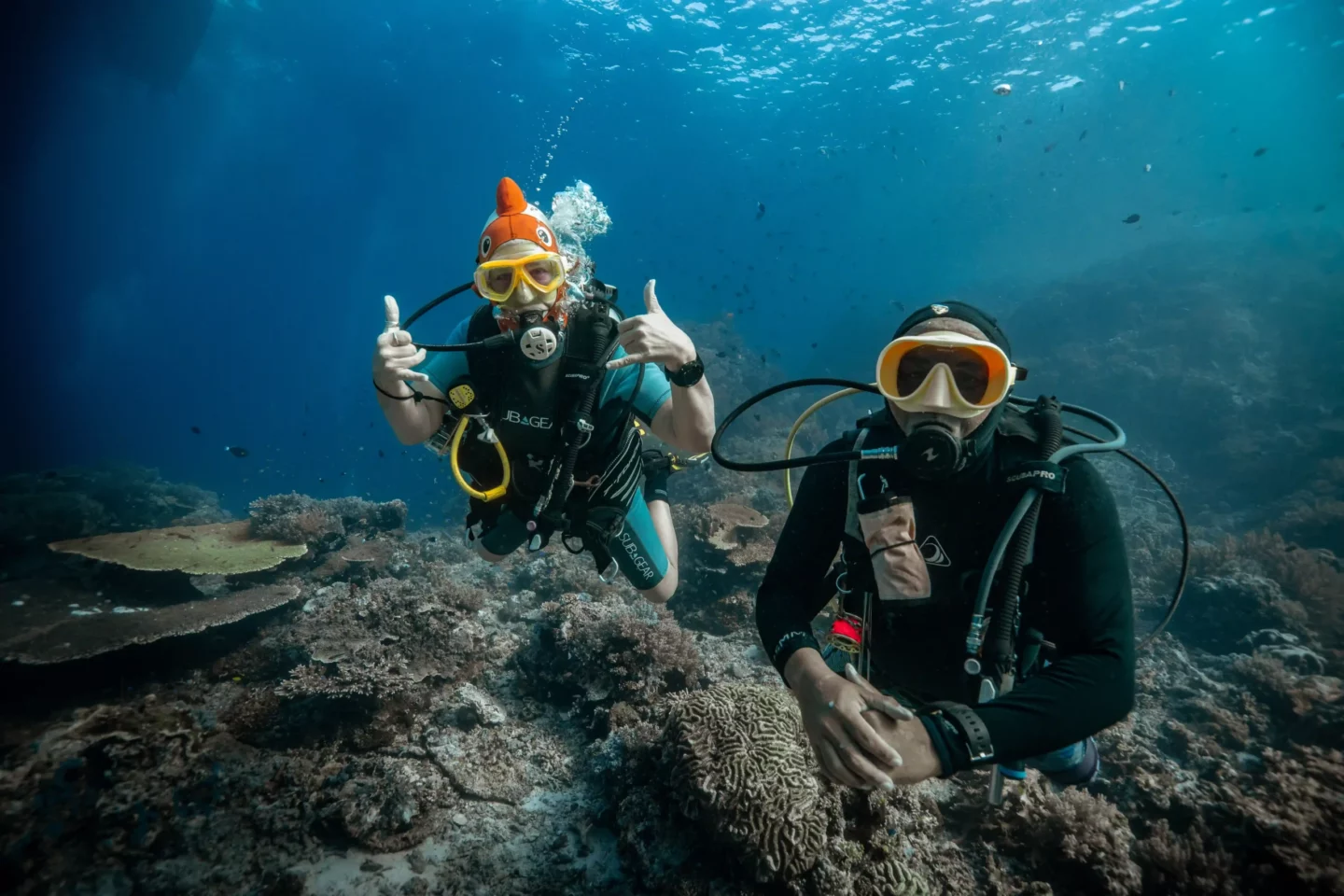
Komodo works year-round, but it changes its mood every few months.
- April to November (Dry Season) – The classic time to go. Warm water, calm seas, long days. Perfect visibility and relaxed crossings.
- December to March (Wet Season) – You’ll get rain and cooler water in the south, but that’s when mantas show up in huge numbers. The reefs are busier, the colours deeper.
- All-Year Tip – If you like blue, head north. If you like nutrients and big animals, go south. The middle gives you a bit of both.
There’s really no “wrong” time, only different versions of perfect.
Read Also: Indonesia Diving Season & Best Time to Dive in Komodo
Why Divers Keep Coming Back to Komodo
Consistent biodiversity
Komodo regularly and consistently delivers a wide variety of marine animals: mantas on one day, macro critters the next. The mix of big animals and small subjects gives returning divers new targets to find and dive with in each trip.
Distinct regions
North, Central and South Komodo each feel different, clearer blue water and schooling fish up north, classic reefs and pinnacles in the middle, cooler nutrient-rich sites in the south. Rotating through these zones keeps the diving fresh across repeat visits.
Year-round interest, changing conditions
There isn’t a single “best” month; conditions shift. Dry season tends to be calmer with warmer water, while parts of the wet season bring cooler water and strong manta activity. Many divers return in a different season to experience another side of the park.
Currents that power the ecosystem
The Indian–Pacific exchange drives nutrients through straits and over pinnacles, sustaining busy reefs. Divers come back because timing the same site on a different tide can produce a completely different dive.
Access and logistics are straightforward
It’s a short flight into Labuan Bajo, followed by an easy transfer to your boat or dive centre; simple enough that repeat trips are practical.
Liveaboards unlock more of the park
Staying at sea lets you reach remote corners, add sunrise or night dives, and time the best tide windows with an experienced team; key reasons many divers choose to return on a liveaboard.
Structured safety and skills progression
Guides plan entries around tides, manage drifts, and brief the use of tools like SMBs and (when appropriate) reef hooks. This controlled approach keeps Komodo safe and also helps divers build capability across repeat trips.
Planning Your Diving Trip to Komodo
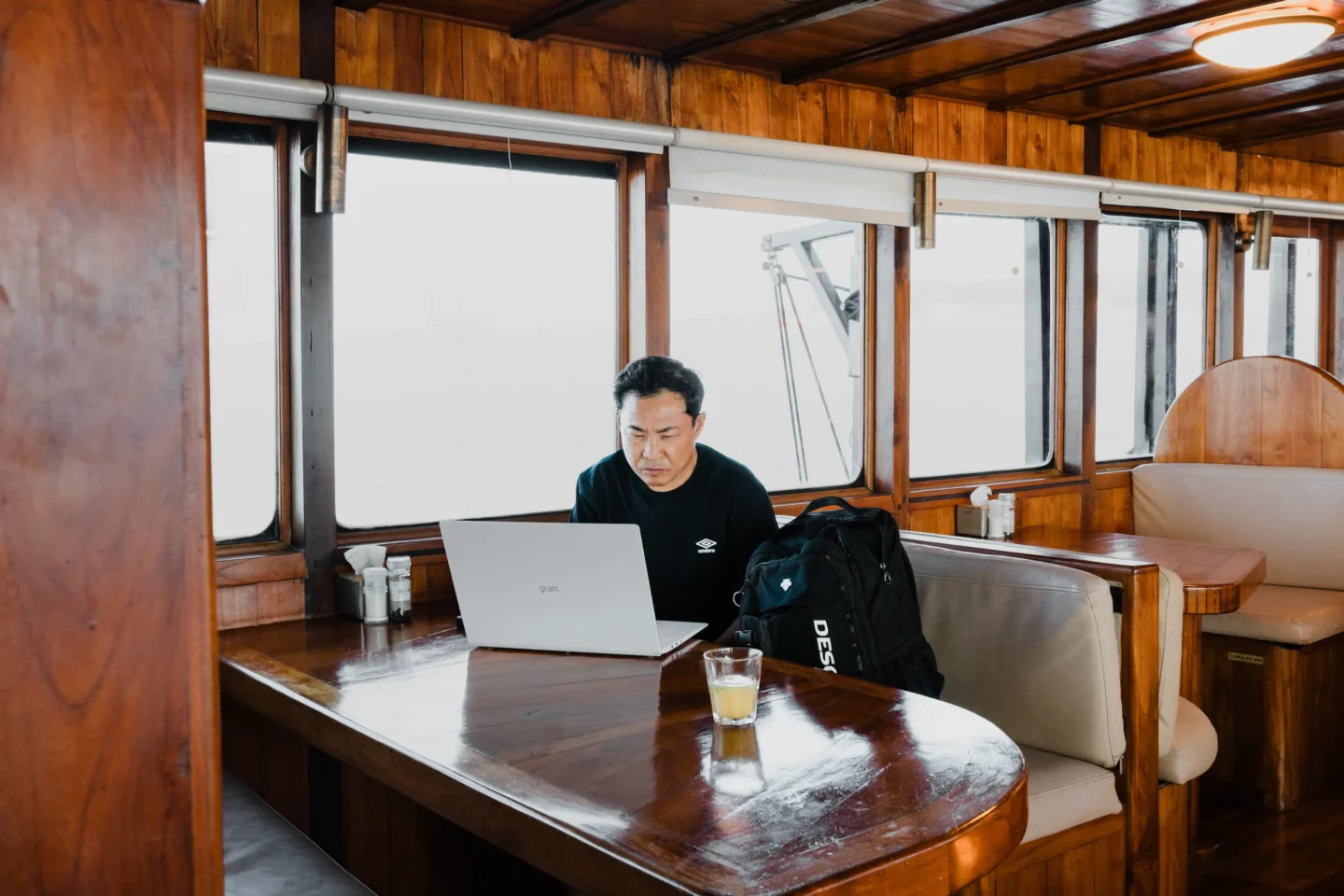
Getting there
Fly into Labuan Bajo (LBJ) from Bali, Jakarta or Surabaya. Transfers to your boat or dive centre are straightforward once you land, which is why repeat trips are easy to organise.
Day trips or liveaboard?
Day boats work for a taste of Komodo, but they won’t reach the park’s far edges or let you time every site around the best tide. A liveaboard gives you broader site access, better tide windows, and a more efficient schedule across North, Central and South, three areas that each feel different underwater.
When to go
Komodo runs year-round with changing conditions. April–November (typically drier) tends to bring warmer water and calmer seas. December–March can be cooler, especially in the south, and is a strong period for manta activity. There isn’t a single “best” month; it’s about the version of Komodo you want to experience.
What to pack
Plan for range rather than extremes. A 3–5 mm wetsuit, reef-safe sunscreen, and your camera cover most needs. Add an SMB and know how to deploy it; reef hooks are used only when briefed and never on living coral. Briefings will outline any site-specific tools or techniques before you enter the water.
Fees and permits
The park charges conservation fees. These are commonly included in your dive package, confirm this at booking, and choose operators that follow park rules; that stewardship protects what you’ve come to see.
Building an itinerary that fits
If you prefer gentler reefs and easy entries, structure more time in Central Komodo; for schooling fish and moderated current, lean into the North; for cooler, nutrient-rich sites (and manta focus on season), include the South. Mix the regions to keep variety across the week. If you choose to go with a Liveaboard, then you wont need to spend your time on planning your own itinerary, as Liveaboards already have itineraries to go with.
Read Also: From Labuan Bajo to Komodo Island, How Do You Get to Komodo Diving?
Why a liveaboard changes everything
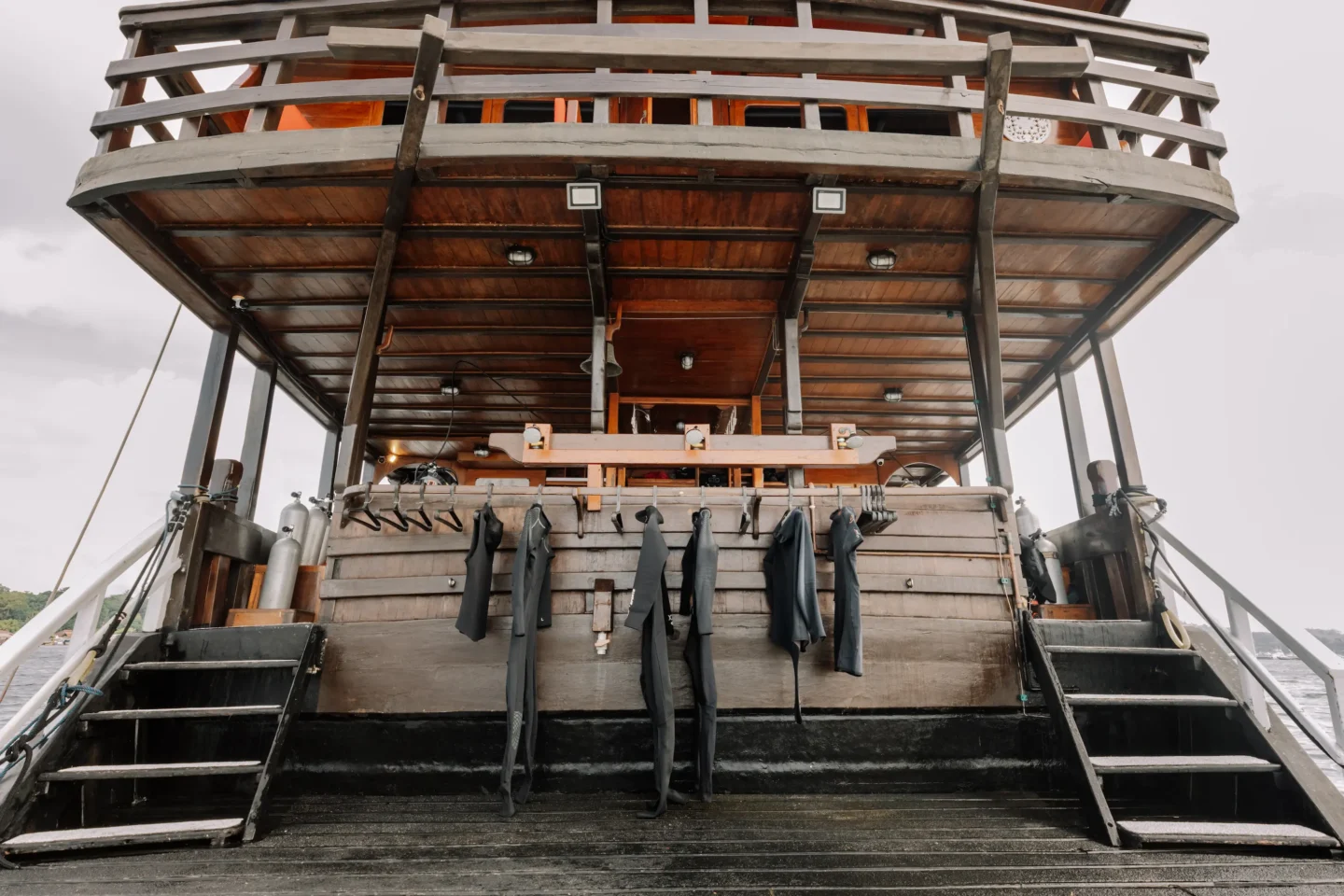
Access to the full park
A liveaboard puts you within striking distance of Komodo’s far corners. You’re not limited by day-boat range or marina departure times, so remote sites become routine rather than rare. That wider reach is the simplest way to stack high-quality dives into a single itinerary.
Timing the best conditions
Being on site means your team can pick precise tide windows instead of working around commuter schedules. Briefings and drop times are set to catch slack or favourable flow, which turns “hard work” dives into controlled, efficient drifts and makes headline sites more accessible.
More diving, less rushing
Liveaboards streamline the day: kit stays set up, surfaces are short, and sunrise or night dives are easy to schedule. That efficiency increases in-water time without the hurry that often comes with shore-based days. You get a steady rhythm rather than a race.
Consistency and safety management
Experienced cruise directors and guides run standardised briefings, drift procedures and SMB use. Entries are chosen for the conditions on the day, and tools like reef hooks are used only when appropriate. The result is predictable, repeatable practice across a week, good for both comfort and skill progression.
Clearer value for effort
Because you’re sleeping near the action, transit time drops and dive quality rises. Compared with day trips, you see more sites that match your goals, north for schooling fish, central for classic reefs, south for cooler, nutrient-rich dives, without wasting hours shuttling back and forth.
Tips for Safer, Happier Dives in Komodo
Listen to the briefings and plan to the tide
Conditions in Komodo change with moon and tide, so the plan matters. Pay attention during briefings and trust the timing calls, local teams read the water and choose entries to keep the dive controlled and efficient.
Stay together and let the water work for you
In drift dives, proximity is safety and comfort. Stay close to your guide, avoid swimming against the flow, and use the current to move, this lowers effort and keeps the group in the best part of the site.
Carry the right tools and know how to use them
SMBs are usually provided by diving operators. Use reef hooks only when instructed and never on living coral. These simple habits make busy sites calmer and protect the reef.
Pace yourself between dives
Komodo days can be full. Hydrate, rest, and give yourself margin so each dive feels sharp rather than rushed. You’ll enjoy more and finish the trip fresher.
Pack for range, not extremes
A 3–5 mm wetsuit covers most conditions; add personal comfort items and keep your kit streamlined. If you plan to chase cooler southern sites at certain times of year, expect a noticeable temperature drop and briefings that address it.
Choose experience over marketing
Pick operators and guides who know these waters well. Experience shows in site selection, timing, and calm procedures, small differences that add up to safer, better dives.
Bottom line: Komodo rewards good process. Follow clear briefings, stay tight as a team, use your SMB, and keep your pace steady, you’ll have relaxed dives that still deliver the park’s best.
Final Thoughts
Komodo isn’t just another dive destination, it’s a reminder of what the ocean can be when it’s left wild.
You’ll remember the sound of bubbles in the current, the flash of a manta above you, the laughter on deck after a long day. It’s hard to leave, honestly. The park stays with you, in your photos, your stories, and somewhere in the back of your mind, calling you to come back.
Frequently Asked Questions
Is Komodo only for very experienced divers?
No. With proper site selection and timing, most certified divers can dive Komodo safely. Newer divers start on sheltered sites; current-savvy divers can add the headline seamounts.
Liveaboard or day trips in Komodo, what’s the real difference?
Day trips give you a taste; liveaboards reach remote sites, hit better tide windows, and reduce transit time. If you want breadth and consistency across North, Central and South, a liveaboard wins.
Moreover, Liveaboards can stay overnight near the dive sites, giving you the chance to dive early in the morning before most divers arrive. In contrast, day trips means taking a boat from shore, which takes time, and by the time you reach the site, it’s often already crowded.
How long should I go for in my trip to Komodo?
Four to six diving days is a solid minimum to sample multiple regions. Seven to ten days lets you repeat favourites in the best conditions and add sunrise/night dives.
Are the currents in Komodo dangerous?
Currents are manageable when dives are timed to the tide and matched to experience. Expect controlled drifts, clear briefings, and occasional negative entries or reef hooks on specific sites.
What certification do I need?
Think in terms of skills and recent logged dives, not just cards. Confident buoyancy, drift control and SMB use matter more than the label on your certification.
When is the best time to dive Komodo?
Komodo runs year-round. Conditions change by season: some months are warmer and calmer, others cooler with strong plankton/manta activity. Choose the “version” of Komodo you want. Check our guide on The Best Time to Dive in Komodo.
Will I miss the famous sites on a shorter trip?
Short trips can still include signature sites if conditions align, but you’ll have less flexibility for tides and repeats. Longer itineraries improve your odds.
I’m nervous about drift diving, can I still enjoy Komodo?
Yes. Start on protected reefs to dial in buoyancy and spacing. Guides will build you up before scheduling higher-energy sites.
Is Nitrox available and is it worth it?
We do provide Nitrox onboard. Yes! It is worth it. Nitrox is especially useful for multi-day, multi-dive schedules to give you more no-stop margin, especially on moderate depths with repeated profiles.
What’s included in the price?
Onboard La Galigo:
VAT (11%)
Transport from your local hotel or local airport to the harbour.
Transport from disembarkation harbour to your local hotel local airport.
All meals & non-packaged snacks.
Coffee, Tea & drinking water.
Fresh fruit.
Post dive snacks & refreshments.
Check our Pricing Inclusion for more details.
Are there surprise fees (permits, cameras, fuel)?
Komodo has park fees and policies that can change. We disclose these up-front and update guests if authorities adjust rates. Our pricing inclusion also covers this information.
How do I get to Komodo and what about baggage?
Fly to Labuan Bajo (LBJ) via Bali/Jakarta/Surabaya. Check your airline’s sport-equipment allowance; pack compact and protect sensitive kit. Check our guide on How to Get to Komodo for more info.
What should I pack besides the usual dive kit?
That depends on your choice. Most liveaboards (like us) provide diving equipment rental onboard, and most of your needs are likely to be covered. This also depends on which liveaboard you choose to go with, check their pricing inclusions to be sure.
The same applies to day boats. You’ll need to review their price inclusions and determine which of your needs aren’t covered or available.
Generally though, you will need reef-safe protection, such as sunscreen and after-sun lotion. It’s also a good idea to bring your own dive computer, mask, and fins if you prefer using familiar equipment. Don’t forget a lightweight towel, dry bag, and a reusable water bottle to stay hydrated between dives.
If you’re planning underwater photography, pack your camera gear, chargers, and spare batteries. A light jacket or hoodie is useful for cooler evenings, and motion-sickness medication can be helpful for longer crossings.
Lastly, remember essentials like travel documents, insurance information, and any personal medications, these are easy to overlook but important to have on hand
I’m a photographer, wide or macro?
Bring both if you can. Wide for mantas and schooling fish; macro for critters.
Can non-divers or snorkellers enjoy Komodo?
Yes. Many sites have excellent snorkelling and there are popular land stops (e.g., viewpoints, beaches). Check your itinerary for surface-interval activities.
Can solo travellers join easily?
Yes! We offer both shared and single-occupancy cabins on board. If you prefer some privacy, we recommend choosing our Single Occupancy Cabin option (with a surcharge). If you’re comfortable sharing, the shared cabin is perfect for you.

